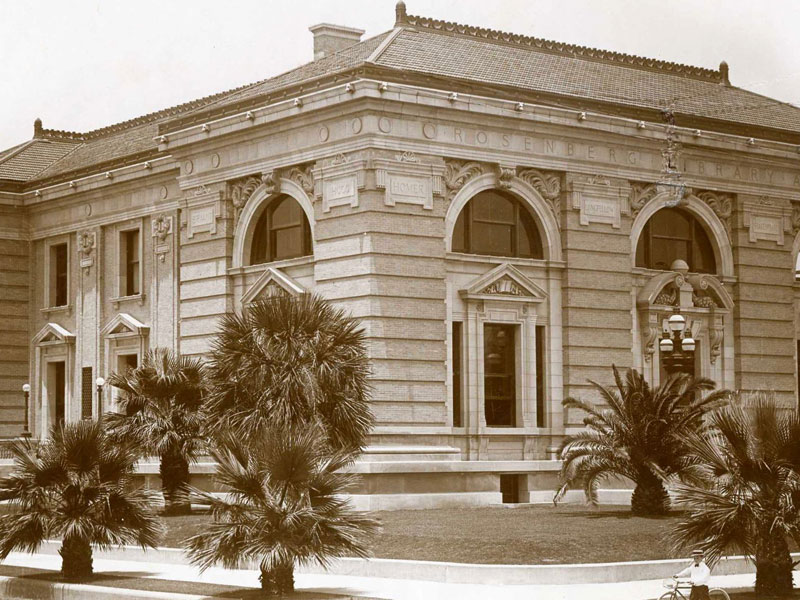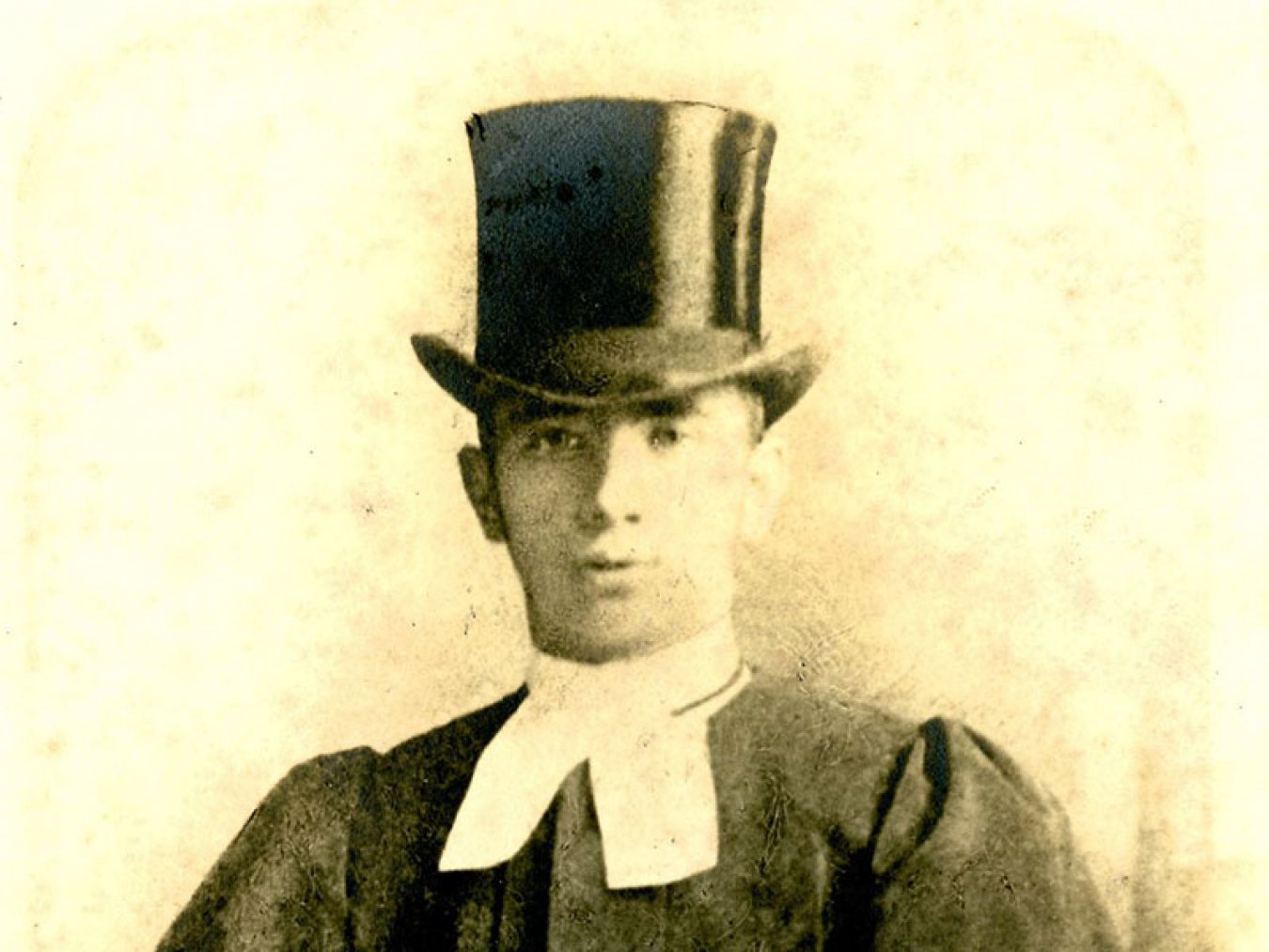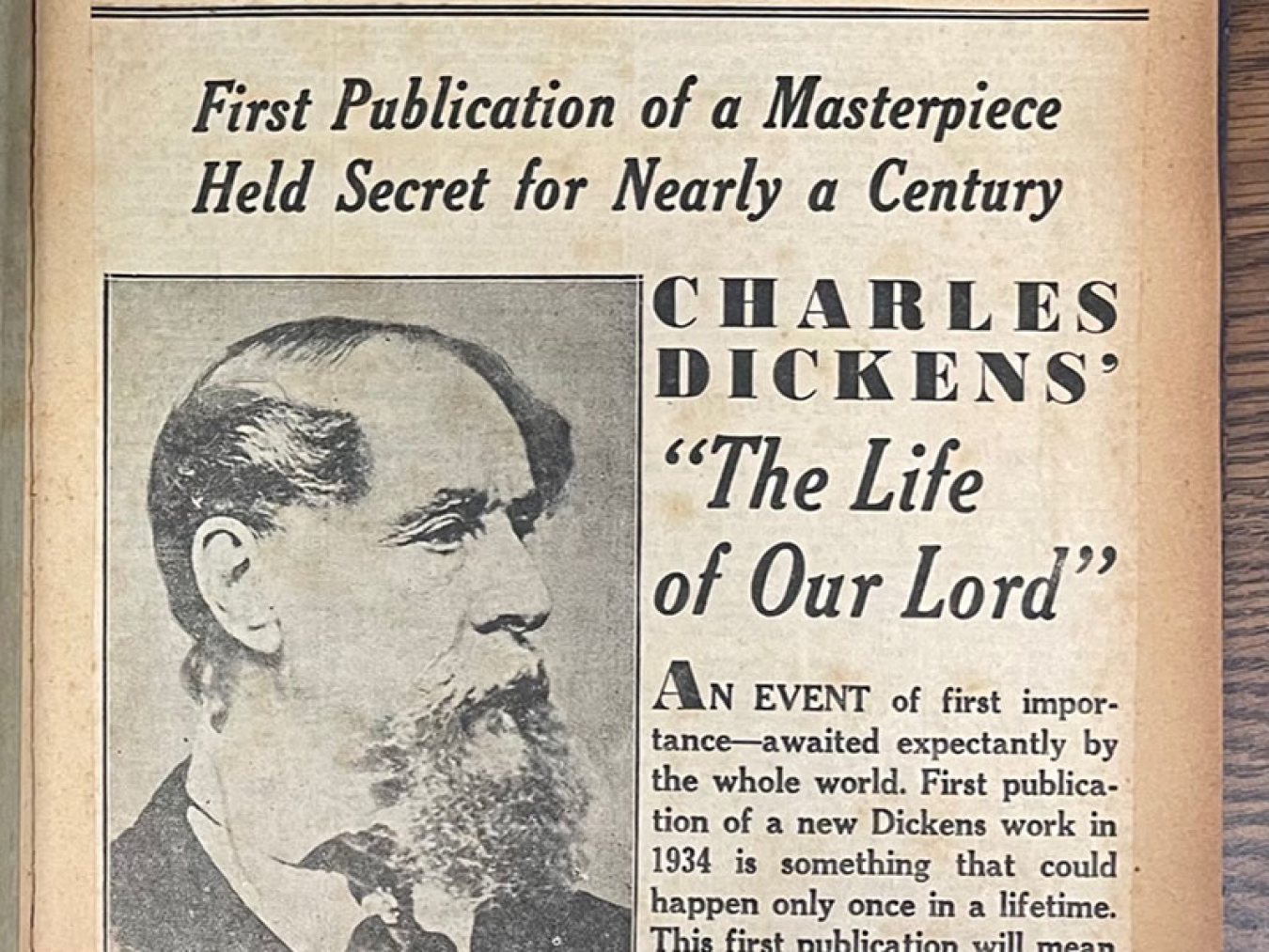Remembering Norris Wright Cuney During Black History Month
Rosenberg Treasure of the Month
In celebration of Black History Month, Rosenberg Library will exhibit a biography of Norris Wright Cuney written by his daughter, Maud Cuney Hare, in 1913.
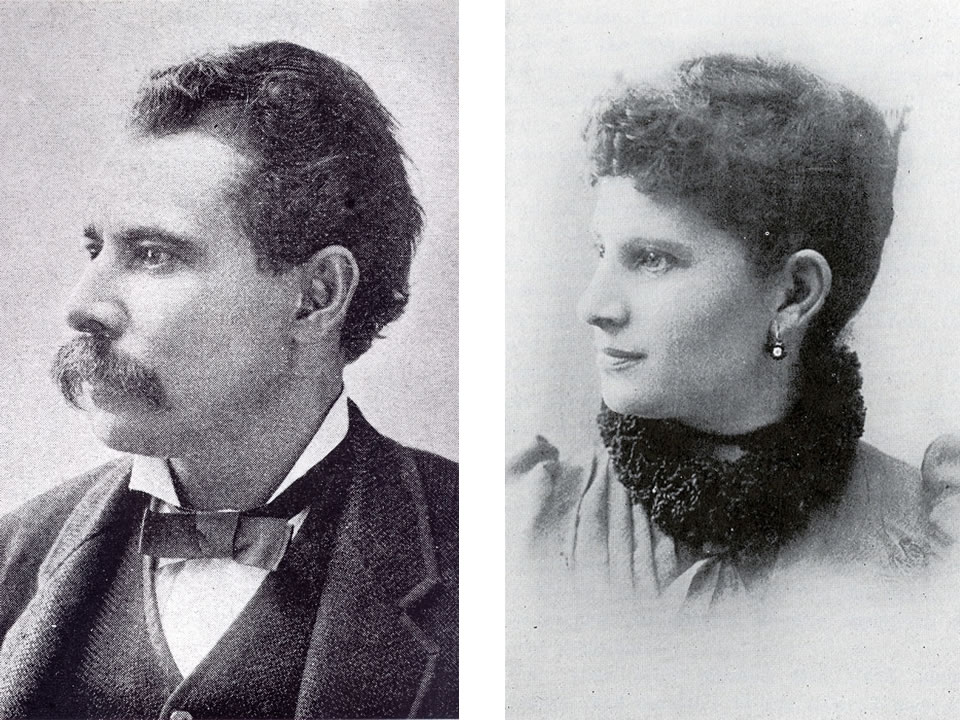
| Norris Wright Cuney (1846-1897) and Adelina Dowdie Cuney (1856-1895) | Courtesy Rosenberg Library |
Galveston politician and civil rights leader Norris Wright Cuney (1846-1897) became a source of inspiration for newly emancipated African Americans in Texas in the years following the Civil War. He fought to secure economic, political, and educational equality for all citizens, and he achieved great personal success in spite the racial prejudice he faced throughout his life.
Wright Cuney was born into slavery on Sunnyside plantation near Hempstead, Texas in 1846. His father, Philip Minor Cuney, was a state senator and among the wealthiest planters in the state. Among the 105 slaves on his 2,000 acre property was Adeline Stuart, with whom Philip Cuney fathered eight children between 1839 and 1860.
During the 1850s, Cuney manumitted Adeline and all of their children. Their two oldest sons were sent to Pennsylvania for formal education. In 1859, thirteen-year-old Wright Cuney left Texas to join his two older brothers at George B. Vashon’s Wylie Street School in Pittsburgh. However, the Civil War brought an end to the boys’ schooling. Wright Cuney found work on steamboats that traversed the Mississippi River.
Cuney eventually returned to Texas and settled in Galveston. He married Adelina Dowdie in 1871. Like her husband, Dowdie’s father was a white planter while her mother was a slave of mixed race. Adeline Dowdie worked as a teacher in Galveston’s public schools and both she and her husband were devoted to improving educational opportunities for African Americans during Reconstruction. The Cuneys had two children—a daughter, Maud, and a son, Lloyd Garrison.
In 1873, Wright Cuney was appointed an inspector of customs at the port of Galveston. Following in his father’s political footsteps, Cuney became a leader in the local Republican Party and was eventually appointed secretary of the state’s Republican Executive Committee. His intelligence, honesty, and loyalty earned him the respect of individuals of all races and backgrounds.
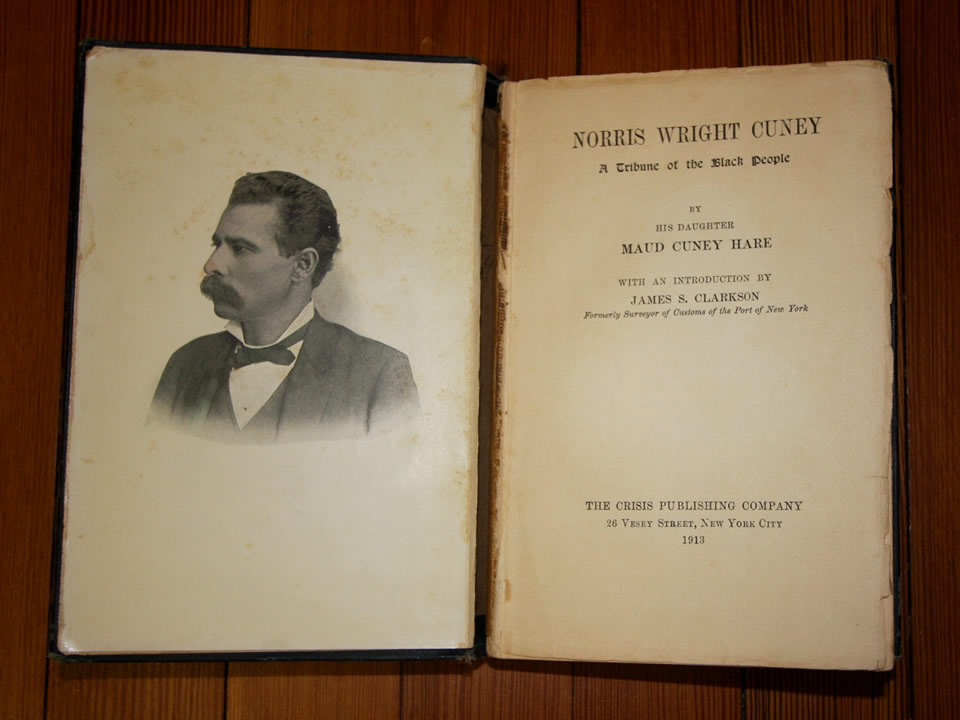
| Maud Cuney Hare, Wright Cuney’s daughter, wrote a biographical account of her father’s life in 1913. Several copies are now preserved in the library’s Special Collections. An accomplished pianist and musicologist, Maude Cuney Hare resided in Boston and was a close friend of W.E.B. Du Bois. | Courtesy Rosenberg Library |
On a local level, Cuney also worked to improve the conditions and expand the opportunities available to African-American dockworkers. He organized the Screwman’s Benevolent Association in an effort to ensure fair pay for black longshoreman.
In 1883, Cuney became the first African American elected as an alderman for the City of Galveston. Representing the 12th Ward—a majority white district on the city’s East End—Cuney worked to promote equality in the city’s public school system. When his motion to create a single, integrated public high school was voted down by fellow council members, he secured funding to establish Central High School, the state’s first high school for African American students.
President Benjamin Harrison appointed Wright Cuney Collector of Customs for the Port of Galveston in 1889, making him one of the most influential people of color in the American South. Cuney was the first Grand Master of the Prince Hall Masons in Texas and held memberships to the Knights of Pythias and the Odd Fellows. He died in 1898 and was buried alongside his wife at Lake View Cemetery in Galveston.
In 1937, the City of Galveston established Wright Cuney Park in his honor. Today, the site is operated as the Wright Cuney Recreation Center at 718 41st Street.
Rosenberg Library
Rosenberg Library has offered over a century of community service to the Galveston area, and is the oldest public library in Texas in continuous operation. The building itself was dedicated on June 22, 1904, the birthday of its patron, Henry Rosenberg. The Moody Memorial Wing opened in 1971, more than doubling the floor space and allowing for a children’s library, a history center, several galleries to showcase museum collections, and later, a computer lab. The Library accepted its first museum piece shortly after it opened in 1904. Since then, thousands of rare and interesting objects from around the world have been added to the collection. Each month they display a “Treasure of the Month”. Learn more by visiting the Rosenberg Library page and the Gifts of Henry Rosenberg section.